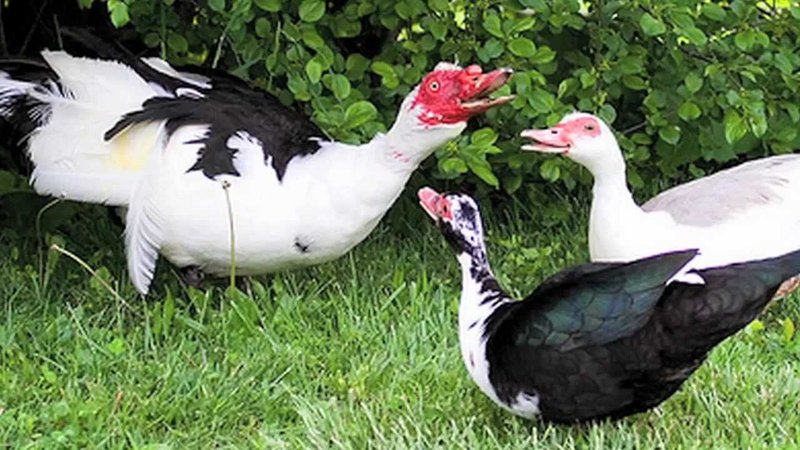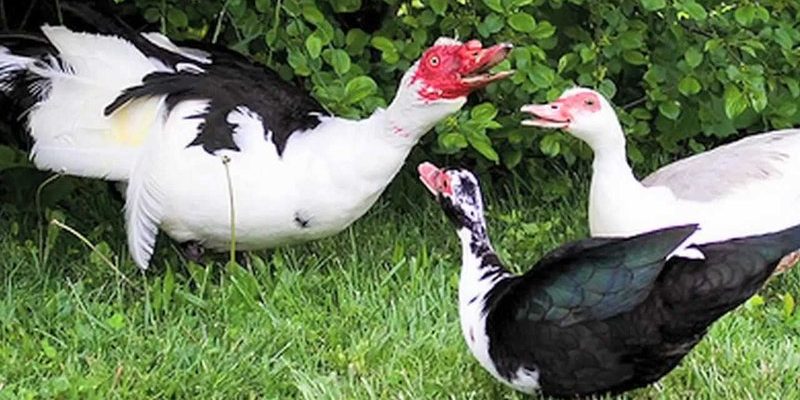
You might be wondering why it’s essential to understand these differences. Well, knowing the unique traits of the Muscovy duck can give you a better appreciation of its behavior, habitat, and even its role in agriculture. So grab your coffee, and let’s get into it.
Physical Characteristics of the Muscovy Duck
One of the first things you notice about a Muscovy duck is its distinct appearance. Unlike many other ducks, Muscovy ducks are large, with adult males weighing between 10 to 15 pounds and females slightly smaller. They have a unique, crest-like structure on their heads and can have bright green or blueish iridescent feathers.
Now, the most striking feature? Their facial caruncles. Caruncles are the fleshy, wart-like growths on their faces, and they can vary in color—often red or orange. This gives them a unique look that can be polarizing. Some might find them quirky, while others might think they look a bit odd! Regardless of your opinion, these features help you identify a Muscovy duck from other species at a glance.
In contrast, many domestic ducks, like the Pekin or the Rouen, have smoother, rounder bodies and more uniform feather patterns. The differences in their silhouettes can help backyard duck owners or birdwatchers distinguish the Muscovy from its counterparts easily.
Behavior and Temperament
Let’s talk personality. Muscovy ducks are known for their *gentler* temperament compared to many other breeds. Where you might expect a loud quack from standard ducks, Muscovies have a quieter, hissing sound. It’s almost as if they’re more sophisticated, opting for whispers over shouts.
Interestingly, this calm nature makes them great pets! They’re often friendlier and more interactive than other duck species, and they can bond well with humans. If you’ve ever owned a typical duck like a Pekin, you might find Muscovies to be more relaxed during feeding time or when being handled.
On the flip side, many domestic ducks can be a bit more excitable and loud. If you have a mixed flock, you might notice how the Muscovy ducks tend to hang back from the chaos. This difference in behavior is worth noting if you’re considering introducing Muscovy ducks to your environment.
Habitat Preferences
Muscovy ducks are native to Central and South America and prefer habitats with access to water—like ponds, marshes, and wetlands. This contrasts with many other domestic duck breeds that are often bred for farm life and can thrive in controlled environments.
You might find Muscovy ducks in wild settings, where they forage for food and have space to roam freely. They love to hunt for insects and plants, which makes their diet varied and interesting.
In contrast, domestic ducks often rely on humans for their diet and are less likely to hunt for their meals. If you’re raising or observing Muscovy ducks, it’s essential to ensure they have a comfortable space that mimics their natural habitat, as they thrive in environments with both land and water.
Diet and Feeding Habits
Speaking of diet, Muscovy ducks have a varied palate. They enjoy a mix of grains, seeds, and greens, along with insects and small amphibians. This omnivorous diet helps them maintain their health and energy levels.
In a backyard setting, feeding them can be straightforward. You can provide them with commercial duck feed, but supplementing their diet with fresh vegetables or kitchen scraps (that aren’t harmful) can keep them happy.
On the other hand, domestic ducks often require more structured feeding since they’re more reliant on humans for their meals. This means that while a Muscovy might be out there foraging, a domestic duck could be waiting for you to fill its feeder.
Reproductive Differences
Reproduction is another area where Muscovy ducks differ from other species. They are unique in that they can breed year-round, unlike some domestic ducks that may have a specific breeding season. This characteristic allows Muscovy ducks to raise multiple broods per year if conditions are right.
You might also find that Muscovy mothers are quite nurturing. They often form strong bonds with their ducklings, leading them around as they teach them where to find food and water. Other duck breeds might be less attentive, sometimes leaving their young to fend for themselves more quickly.
Knowing these reproductive nuances can help you understand how to care for Muscovy ducks, especially if you’re considering breeding them.
Common Misconceptions About Muscovy Ducks
There are some misconceptions surrounding Muscovy ducks that can lead to confusion. For example, many people think of them as being related to domestic ducks, but they actually belong to a different genus. This means they have distinct behaviors and characteristics that set them apart from typical duck breeds.
Another misconception is that all Muscovy ducks are aggressive. While they can be territorial during breeding season, they tend to be quite calm and friendly otherwise. It’s essential to understand their behavior fully before making any judgments.
By clearing up these misconceptions, you can appreciate the Muscovy duck more for the individual it is, rather than lumping it in with other ducks based solely on appearance.
So there you have it—the differences between the Muscovy duck and its similar bird relatives. From their striking physical features to their gentler temperament and unique habits, Muscovy ducks are fascinating creatures worth knowing about. Understanding these differences not only enhances your appreciation of them but also prepares you better if you’re thinking about bringing these unique birds into your life.
Next time you’re near a pond or a farm, take a moment to observe these ducks. You might just notice the subtle but remarkable traits that make them truly special. Whether they’re foraging, floating, or interacting with one another, Muscovy ducks remind us that nature is full of surprises and diversity!

